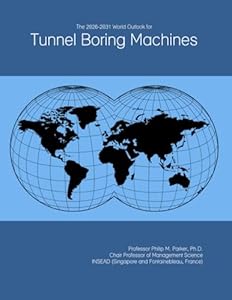The 10 Best Offers for Boring Machines - December 2025
We already helped 10 million customers this year!
General information about Boring Machines:
Introduction to Boring Machines
Boring machines, also known as tunnel boring machines (TBMs), are powerful and complex machines used in various construction projects to create tunnels, boreholes, and underground passages. These machines have revolutionized the field of civil engineering and have significantly improved the efficiency and speed of tunneling operations.
Capabilities and Applications
Boring machines are specifically designed to excavate tunnels by drilling through soil, rock, and other solid formations. They consist of a rotating cutting head equipped with cutting tools, called "cutters," that are capable of breaking and removing the material in front of them. The cutters come in different shapes and sizes depending on the type of ground being excavated. This allows for the adaptation of the machine to different geological conditions.
One of the key advantages of boring machines is their ability to minimize the disturbance to the surrounding area compared to traditional excavation methods. This is particularly beneficial when construction is taking place in densely populated urban areas. Boring machines also help in accelerating tunneling projects as they can work continuously, 24 hours a day, seven days a week.
Types of Boring Machines
There are several types of boring machines, each suited for different purposes. The most common types include microtunnel boring machines (MTBMs), shield tunneling machines, and raise borers. MTBMs are utilized for smaller tunneling projects, typically with a diameter range of 0.2 to 3 meters. Shield tunneling machines, on the other hand, are used for larger projects and can create tunnels with diameters above 3 meters. Raise borers are specially designed for vertical tunneling operations, such as ventilation shafts or mining excavations.
Future Developments
As technology continues to advance, the field of tunneling and excavation is not exempted from innovation. Researchers and engineers are constantly working on improving boring machine designs and capabilities. For instance, hybrid machines that combine different drilling methods (e.g., drilling and mechanical excavation) are being developed to optimize efficiency and adaptability in various geological conditions.
Moreover, advancements in automation and artificial intelligence are expected to play a significant role in the future of boring machines. These developments aim to enhance safety, increase accuracy, and streamline operations by enabling machines to make real-time adjustments based on sensor data and analysis.
Conclusion
Boring machines have transformed the way tunnels and underground passages are created. Their ability to bore through various terrains with minimal disruption to the surrounding environment has made them invaluable in the construction industry. As technology continues to evolve, we can expect further improvements and innovations in the design and capabilities of boring machines. These advancements will undoubtedly contribute to more efficient and faster tunneling operations worldwide.
** "Free Delivery" means that this is possible under the given conditions at the time of data retrieval from the relevant provider, but cannot be guaranteed. It is technically not possible to provide information in real-time. The shipping costs may vary under certain circumstances (different provider, place of delivery, etc.). The shipping costs shown in the further ordering process apply.
Other IMPORTANT INFORMATION that we ask you to take note of:
We may receive a commission if you make a purchase via the links on our site. This has no impact on the placement of the products on our site. Our website is part of amazon associates program - Amazon, Amazon Prime, the Amazon Logo and Amazon Prime Logo are registered trademarks of Amazon, Inc. or its affiliates.
Disclaimer:
1. The prices shown may have risen since the time we last updated them.
2. The actual price of the product on the seller’s site at the time of purchase will govern the sale.
3. It is not technically possible for the prices displayed above to be updated in real-time.










